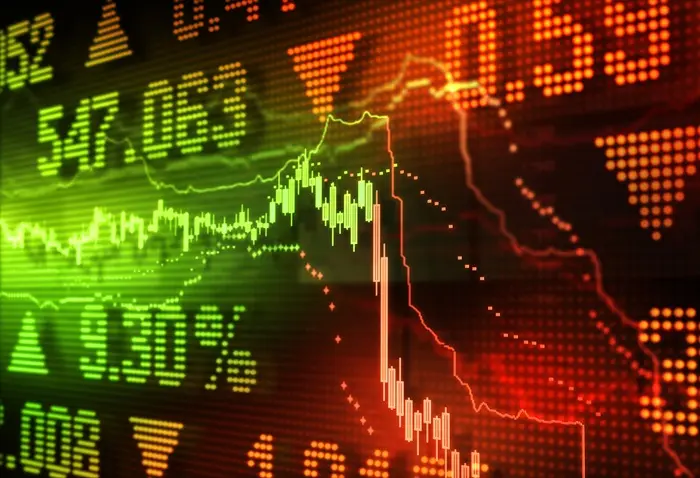If you think President Donald Trump’s trade war looks messy, buckle up: His latest move poses an even bigger threat to the economy.
After months of vowing that he would not fire Federal Reserve Chairman Jerome Powell, Trump reversed course Thursday, saying Powell’s “departure” came too late. Stocks tumbled.
Then, as U.S. stock traders enjoyed a pleasant three-day weekend — the first sunny, balmy spring weather of the year in New York City — they began to wonder if Trump meant it. Perhaps Thursday’s threats were just bluster from a president prone to temper tantrums — social media posts his more sedate advisers would surely try to limit to avoid full-blown panic.
Shortly after the U.S. market opened on Monday, Trump again blasted Powell for not cutting rates fast enough, sending stocks tumbling and the dollar to its lowest level in three years.
While Trump’s tariff plan has wreaked havoc, the uncertainty it has created has been priced in to some extent. Markets are notoriously averse to uncertainty, but the Trump administration’s 90-day moratorium on its most aggressive tariffs has provided some reassurance that if enough negative reaction occurs, Trump might back down.
Attacking the Fed’s independence is unprecedented and reckless, and few have matched it. But now even White House adviser Kevin Hassett — who has written a book arguing against firing the Fed chairman — has publicly said the administration is discussing whether to fire Powell before his one-year term is up.
Granted, these attacks on Powell may be empty threats. Krishna Guha, vice chairman of Evercore ISI, said in a note that Trump could simply be blowing off steam or scapegoating Powell for a future tariff-induced recession.
“But that’s self-defeating,” he wrote. Trump’s public disparagement of Powell “risks putting upward pressure on inflation expectations and making it harder for the Fed to cut rates.”
Leaving aside the very real legal question of whether Trump can actually remove a sitting Fed chair (long story short: it’s controversial), here’s why Trump’s renewed focus on Powell (whom Trump himself appointed in 2017) is so worrisome:
The Fed, the independent institution that sets U.S. monetary policy, is the ultimate economic safety net. It has the ability to absorb major shocks — like a recession triggered by a pandemic or global trade disruptions — by setting interest rate policy and using its virtually unlimited balance sheet.
During the 2022-2023 inflation crisis, the Fed raised rates at a historic pace. Former President Joe Biden was no doubt unhappy with the sudden spike in mortgage, credit card rates, and auto loans that exacerbated the U.S. affordability crisis. But the Fed accomplished its mission, bringing inflation down to near-normal levels without tipping the economy into recession.
Take away that independence, and you take away the Fed’s ability to control prices.
“Fighting inflation requires being apolitical and nonpartisan,” said Erasmus Kersting, an economics professor at Villanova Business School. “Otherwise, there is always the temptation to stimulate the economy for political gain, especially by populist leaders, who always succumb to this temptation.”
American presidents like the Fed to cut interest rates because it stimulates economic growth, but it also leads to higher inflation. Kersting added that once the public, including global investors, no longer believes that the Fed really wants to stop inflation, “inflation is almost impossible to contain.”
In other words, the Fed is a buffer against the worst effects of Trump’s economic policies.
Trump wants the Fed to cut rates faster, but a large part of the reason for the Fed’s caution is Trump’s own tariff agenda, which, as Powell pointed out in his speech last week, “is likely to lead to at least a temporary increase in inflation.”
Appointing a Fed chair who is willing to do Trump’s bidding would undermine the credibility of the world’s most important central bank and further undermine the United States’ unique position as the most trusted destination for money and investment. But it could also seriously damage the economy.
Just as Trump’s tariffs have slowed economic growth, a quick and aggressive rate cut could reignite inflation — the Fed’s GDPNow tool currently predicts a reversal and contraction in the economy last quarter.
Guha says any real attempt to fire Powell — which Evercore analysts said Friday is unlikely — would lead to a surge in “stagflation trades,” in which the economy suffers a bad combination of slow growth and high prices. (See also: America in the 1970s) The resulting panic would cause bond yields to soar (meaning, the cost of borrowing money to buy a house or a car would rise further), which Guha argues would likely lead to a recession.


































